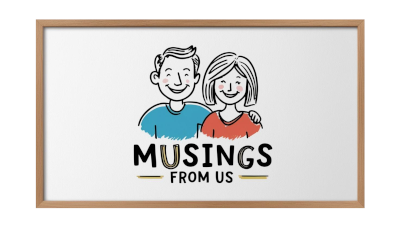Like Neo discovering the truth about the Matrix, I’ve uncovered some unsettling realities about traditional education that I can’t simply ignore. After watching my oldest child struggle with the rigid confines of conventional schooling, I knew there had to be a better way. It wasn’t an easy decision – or one that Katy and I made lightly – but choosing to homeschool our children has opened doors we never knew existed. If you’re wondering whether we’ve lost our minds or found something revolutionary, I’ll share what pushed us over the edge.
Our Educational Journey Begins
After mulling over our educational options for months, I’ve decided to homeschool my kids starting this fall.
The journey to this decision wasn’t exactly a walk in the park – more like a marathon through a jungle of curriculum choices, state regulations, and well-meaning relatives sharing their opinions.
I’ve crunched the numbers, and while the upfront costs aren’t negligible ($500-1500 for curriculum, plus about $200 for supplies), it’s considerably less than private school tuition.
Plus, we’re looking at the freedom to tailor education to each child’s pace – something you just can’t put a price tag on.
The bureaucratic hoops aren’t as intimidating as I initially feared.
In our state, we’ll need to file a notice of intent, maintain attendance records, and provide 180 days of instruction.
Think of it as running your own micro-school, minus the fluorescent lighting and mystery meat lunches.
Want to know what sealed the deal for me?
It wasn’t just the flexibility or the customization – it was realizing that I could give my kids something the system can’t: an education built on individual liberty and critical thinking.
Traditional School System Concerns
My concerns about traditional schooling stretch far beyond the typical complaints about standardized testing or class sizes. The rigid, one-size-fits-all approach reminds me of trying to build a custom home with only prefabricated parts – it just doesn’t work for every family’s needs.
I’ve watched our public schools become increasingly focused on compliance rather than curiosity. Did you know the average elementary student spends less than 20 minutes per day on free exploration and creative activities? That’s like having a toolbox full of fascinating instruments but only being allowed to use the hammer.
The financial angle can’t be ignored either. While public school is “free,” parents still shell out an average of $1,468 per student annually on supplies, activities, and hidden fees.
Factor in the emotional costs of peer pressure, bureaucratic constraints, and standardized curriculum pacing, and you’re looking at a pretty hefty price tag.
What really gets me is how schools treat learning like an assembly line process. Our kids deserve better than being stamped out like identical widgets, don’t they? They need space to develop their own intellectual craftsmanship.
Personal Freedom Matters
While many focus on academic outcomes, I believe personal freedom lies at the heart of the homeschooling decision. The ability to shape our children’s education journey, without bureaucratic constraints, represents one of the purest expressions of liberty in modern society.
Think about the profound implications of educational autonomy – it’s like being the captain of your own ship rather than a passenger on someone else’s vessel. When Katy and I examined our options, we realized three fundamental freedoms that homeschooling would give our family:
- The power to adjust learning pace and style based on our child’s individual needs, not arbitrary standards.
- The freedom to incorporate our values and beliefs without institutional filtering.
- The ability to create flexible schedules that work for our family’s unique rhythm.
The financial investment varies widely, typically ranging from $300-$2,500 annually depending on curriculum choices. But isn’t the cost of conformity even higher?
We’ve found that homeschooling isn’t just about education – it’s about reclaiming control over how our children learn, grow, and develop their worldview.
Let’s be honest: breaking free from the system isn’t always easy, but neither was gaining independence from Britain, right?
Research and Decision Making
Taking bold steps toward freedom requires solid research and careful deliberation. I spent countless hours diving into homeschooling statistics, curriculum options, and legal requirements in our state – because let’s face it, you don’t want the government breathing down your neck when you’re trying to liberate your kids from the system.
The numbers really opened my eyes. Did you know homeschoolers typically score 15-30% higher on standardized tests?
And while public schools spend an average of $12,000 per student annually, most homeschool families invest between $300-1,800 per year, depending on their approach.
I carefully weighed options like classical education ($600-900/year), online programs ($800-1,200/year), and hybrid models that combine home and co-op learning ($1,000-2,000/year).
Like building a custom home instead of buying cookie-cutter construction, each family’s solution needs to fit their unique blueprint.
The more I researched, the clearer our path became. Knowledge truly is power, and having concrete data helped Katy and me navigate through the fog of uncertainty toward our decision to take control of our children’s education.
Community Support and Resources
Along with our intensive research, discovering a robust network of homeschooling support made all the difference. Our local homeschool co-op turned out to be a game-changer, offering everything from shared teaching responsibilities to group field trips that won’t break the bank.
You might be wondering about socialization – that old chestnut everyone loves to bring up. Well, let me tell you about our thriving community that’s more connected than a neighborhood block party.
We’ve found three key support pillars that make homeschooling not just doable, but downright liberating:
- Weekly meetups with other freedom-minded families ($0-25 per activity)
- Online curriculum sharing groups that slash costs by 60-70%
- Regular skill-swap sessions where parents teach their expertise (from carpentry to coding)
The beauty of modern homeschooling communities is their flexibility and resourcefulness.
Whether you’re looking for AP Physics study groups or wilderness survival skills, there’s probably a local group for that.
I’ve found that most resources cost between $100-300 annually per family, but many families share expenses or barter services to keep costs manageable.
Financial Considerations
Money matters tend to dominate homeschooling discussions, and with good reason. When Katy and I first crunched the numbers, I’ll admit I felt a bit queasy – textbooks, curricula, and supplies aren’t exactly pocket change.
But here’s the liberating truth: homeschooling can actually be more cost-effective than you might think.
Let’s break down our annual budget: we spend roughly $600-800 on core curriculum materials, $300-400 on supplementary books, and about $250 on supplies.
Compare that to the hidden costs of public school – those endless fundraisers, school clothes, transportation, and packed lunches add up faster than my hardware store receipts!
The real financial genius comes in flexibility. We’ve found creative ways to slash costs – from sharing resources with other homeschool families to utilizing free online tools.
Ever noticed how public libraries are like educational goldmines? They’re packed with free resources that would make any curriculum developer jealous.
Curriculum We Chose
The stack of curriculum options initially felt as tall as my workshop shelves. After weeks of research and countless cups of coffee, Katy and I finally found our perfect fit – a blend of Classical Conversations and Saxon Math, with a healthy dose of hands-on science experiments thrown in.
We chose this combination for three key reasons:
- It emphasizes critical thinking over rote memorization, letting kids actually understand why things work.
- The structure is flexible enough to adapt to our family’s schedule, just like how I customize my woodworking projects.
- At $1,200 per year for both kids combined, it’s considerably more affordable than private school’s $15K price tag.
The Classical Conversations community meets weekly, giving our kids social interaction while maintaining their independence.
Saxon Math might seem old-school to some, but hey – if it ain’t broke, don’t fix it. I’ve seen remarkable results in how it builds concept mastery through incremental development.
For science, we’re using Apologia’s curriculum, but I’ve added my own twist by incorporating real-world projects from my workshop.
Nothing teaches physics quite like building a trebuchet, right?
Daily Schedule and Structure
Building a strong curriculum was only half the battle – implementing it effectively required careful planning of our daily routine. After considerable trial and error, we settled on a rhythm that works beautifully for our family’s independent spirit.
Our day kicks off at 8:30 AM with “Morning Meeting” – a quick 15-minute check-in where we review goals and tackle any burning questions. Think of it as our daily mission briefing, minus the bureaucratic nonsense you’d find in traditional schools.
Core subjects run from 9 AM to 2 PM, with plenty of flexibility built in. We’re not slaves to the clock here! Each subject gets roughly 45-minute blocks, separated by 15-minute breaks where the kids can decompress, grab snacks, or simply breathe.
The afternoon schedule (2-4 PM) is reserved for hands-on projects, field trips, or independent study. Remember those dreaded homework assignments? We’ve eliminated them entirely. When you’re learning efficiently during the day, there’s no need to drag schoolwork into evening family time.
The beauty of this schedule? It’s completely adaptable. Having a rough morning? We can shift everything back an hour. Beautiful weather? We’ll take science class outside.
Early Results and Observations
After six months of homeschooling, I’m thrilled to report remarkable progress in both academic performance and emotional well-being. Our investment of $1,200 in curriculum materials and learning tools has already paid dividends in ways I hadn’t imagined.
The most striking improvements I’ve observed:
- My daughter’s reading comprehension jumped two grade levels – from struggling with basic chapter books to devouring young adult novels like they’re candy.
- Math anxiety has transformed into genuine curiosity – she’s actually asking for more challenging problems (who is this kid?).
- Social skills have blossomed through homeschool co-op activities, proving wrong those who warned about isolation.
The flexibility to adapt our teaching style has been revolutionary. When something isn’t clicking, we pivot – no bureaucratic red tape or standardized testing constraints. It’s like having a master key to access your child’s potential, rather than forcing them through a one-size-fits-all door.
Sure, we’ve had our share of challenging days (let’s not talk about the Great Science Experiment Disaster of 2023), but watching my daughter’s confidence grow has made every moment worthwhile.
The proof is in the pudding – or in this case, the test scores and genuine smiles.

